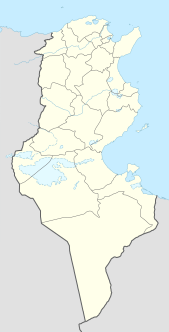Gratianopolis was an ancient city and Roman Catholic diocese in Mauretania Caesariensis in the Maghreb. It now is a Latin Catholic titular see.
Aïn El Kebira is a city located 27 km north far from Sétif. As Ancient Satafis it was a bishopric, which remains a Catholic titular see.

Medjana is a town and commune (municipality) in Bordj Bou Arréridj Province, Algeria. It is the (approximative) location the Ancient city and bishopric Vardimissa, which remains a Latin Catholic titular see.

Djinet, the classical Cissi, is a port town and commune in the Bordj Menaïel District of Boumerdès Province, Algeria, east of the mouth of the Isser River and around Cape Djinet. As of 2008, the population of the municipality is 21,966.

Rucuma is a former city and bishopric in Roman North Africa, which remains a Latin Catholic titular see.

Decoriana was an ancient Roman–Berber city and former bishopric in Tunisia. It is now a Latin Catholic titular see.

Vazari-Didda or Vazari Didda) was an Ancient city and bishopric in Roman Africa, which remains a Latin Catholic titular see.

Castra Nova was a Roman-era city and diocese in Mauretania, Africa Proconsulare. The town is identified with the stone ruins at Mohammadia, Mascara in modern Algeria. It is now a Roman Catholic titular see.

Tabunia, is an ancient city and former bishopric of Roman North Africa, which remains a Latin Catholic titular see.
Taborenta, Mauretania Caesariensis was a Berber civitas (town) and bishopric in Roman North Africa. It disappeared during the 7th century, and is assumed to be near Saida in modern Algeria. It was nominally restored in 1933 as a titular see.

Tabaicara was a Roman-Berber civitas and bishopric in Mauretania Caesariensis. It is now a Latin Catholic titular see.

Thucca in Numidia was an Ancient Roman era town and the seat of an ancient Bishopric during the Roman Empire, which remains only as a Latin Catholic titular see.

Siccenna was a Roman Era town and episcopal see in the Roman province of Africa Proconsularis in what is today northern Tunisia, which is now a Latin Catholic titular bishopric.
Buleliana was a civitas (town) and bishopric in Roman North Africa and remains a Latin Catholic titular see.
Cellae in Proconsulari was an ancient city and bishopric in Roman Africa, which remains a Latin titular see.
Cabarsussi, was an ancient civitas (municipality) and bishopric in the Roman province of Byzacena, that is tentatively identifiable with ruins at Drâa-Bellouan in modern Tunisia. The current bishop is Terence Robert Curtin, auxiliary bishop of Melbourne.

Summula was an ancient city and bishopric in Roman North Africa. It is now a Latin Catholic titular see.
Media was an ancient city and former bishopric in Roman North Africa, now a Latin Catholic titular see in Algeria.
Vegesela was an Ancient city and former bishopric in Roman North Africa and remains a Latin Catholic titular see.

The Diocese of Subbar is a suppressed and titular see of the Roman Catholic Church.








